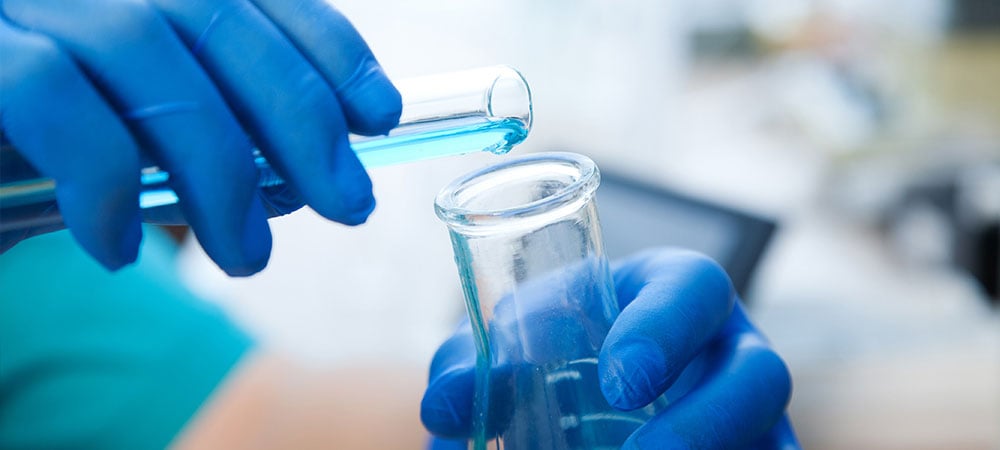
Summary
Nitrosamines are DNA-damaging, cancer-causing disinfection byproducts that form when nitrate or other nitrogen-containing compounds in water react with certain disinfectants, such as chlorine and chloramine.
Organic waste containing nitrogen, such as discharge from municipal wastewater treatment plants and runoff from animal feeding operations, pollutes water sources and causes the need for this treatment.
For most people, diet is the largest source of exposure to nitrosamines. Nitrosamines are found in foods like cured and processed meats, and in beer; they also form when people consume food and water containing nitrate and nitrite. A diet rich in antioxidants like vitamin C can reduce nitrosamine formation in the body.
Fifteen different nitrosamines are listed as carcinogens in the U.S. Department of Health and Human Services National Toxicology Program Report on Carcinogens. Yet the Environmental Protection Agency has not set a legal limit for nitrosamines in drinking water.
California in 2006 set a public health goal for one of the most common nitrosamines, N-nitrosodimethylamine, or NDMA. The goal is 0.003 parts per billion, or ppb, in drinking water, which corresponds to an estimated one-in-a-million cancer risk from lifetime exposure at this level.
What are the toxic effects of nitrosamines?
Nitrosamines damage DNA and increase the risk of cancer. Most of these chemicals are known animal carcinogens, causing tumors in multiple organs, including the liver, stomach, lungs, kidneys and blood. Many nitrosamines have been listed by public health agencies as likely human carcinogens.
A 1999 study led by Paul Knekt at the National Public Health Institute in Finland found dietary NDMA exposures increased the risk of colorectal cancer in people. Dietary intake of nitrosamines has also been linked to stomach, esophageal and lung cancers.
What levels of nitrosamines in drinking water are safe?
In the past, nitrosamine exposures were thought to come almost exclusively from food. More recently, scientists detected NDMA contamination in drinking water and pointed to the drinking water disinfection process as the cause of nitrosamine formation.
The growing concern over nitrosamines in drinking water prompted the EPA to list NDMA and five other nitrosamines as priority drinking water contaminants for review as part of the fifth candidate contaminant list.
Because nitrosamines are not federally regulated, few water systems test for them. The tests that are conducted are usually for NDMA. Other nitrosamines may occur along with NDMA but might not be tested for.
In California, water suppliers must notify customers if the levels of three nitrosamines – NDMA, N-nitrosodiethylamine and N-nitrosodi-n-propylamine – exceed 0.01 ppb. Massachusetts also has established a drinking water guideline for NDMA, at 0.01 ppb.
What can be done to reduce exposure to nitrosamines?
Once formed, nitrosamines are very difficult to remove from water and require specialized treatment, such as reverse osmosis.
The best way to reduce nitrosamine levels in water is to remove their precursors and prevent their formation before water reaches the tap. This includes controlling pollution from the use of nitrogen-based fertilizers and industrial waste.
Since the majority of nitrosamine intake comes directly or indirectly from diet, limiting your consumption of red, processed and cured meats is among the best things you can do to reduce nitrosamine exposures.
References
California Office of Environmental Health Hazard Assessment, Public Health Goal for n-Nitrosodimethylamine in Drinking Water. 2006. Available at oehha.ca.gov/water/chemicals/n-nitrosodimethylamine.
California State Water Resources Control Board, Drinking Water Notification Levels. 2024. Available at https://oehha.ca.gov/water/notification-levels-chemicals-drinking-water.
E. De Stefani et al., Dietary Nitrosodimethylamine and the Risk of Lung Cancer: A Case-Control Study from Uruguay. Cancer Epidemiology, Biomarkers, and Prevention, 1996, 5(9):679–682.
P. Knekt et al., Risk of Colorectal and Other Gastrointestinal Cancers After Exposure to Nitrate, Nitrite and N-Nitroso Compounds: A Follow-Up Study. International Journal of Cancer, 1999, 80(6):852–856.
S.C. Larsson et al., Processed Meat Consumption, Dietary Nitrosamines and Stomach Cancer Risk in a Cohort of Swedish Women. International Journal of Cancer, 2006, 119(4):915-919.
C. Le Vecchia et al., Nitrosamine Intake and Gastric Cancer Risk. European Journal of Cancer Prevention, 1995, 4(6):469–474.
K. Lin et al., Dietary Exposure and Urinary Excretion of Total N-Nitroso Compounds, Nitrosamino Acids and Volatile Nitrosamine in Inhabitants of High- and Low-Risk Areas for Esophageal Cancer in Southern China. International Journal of Cancer, 2002, 102(3):207–211.
K. Lin et al., Intake of Volatile N-Nitrosamines and Their Ability to Exogenously Synthesize in the Diet of Inhabitants from High-Risk Area of Esophageal Cancer in Southern China. Biomedical and Environmental Sciences, 2002, 15(4):277–282.
Massachusetts Department of Environmental Protection, Standards and Guidelines for Contaminants in Massachusetts Drinking Waters. 2024. Available at www.mass.gov/eea/agencies/massdep/water/drinking/standards/standards-and-guidelines-for-drinking-water-contaminants.html#Guidelines.
D. Pobel et al. Nitrosamine, Nitrate and Nitrite in Relation to Gastric Cancer: A Case-Control Study in Marseille, France. European Journal of Epidemiology, 1995, 11(1):67–73.
A.R. Tricker, N-Nitroso Compounds and Man: Sources of Exposure, Endogenous Formation and Occurrence in Body Fluids. European Journal of Cancer Prevention, 1997, 6(3):226–268.
U.S. Department of Health and Human Services, Report on Carcinogens, Fourteenth Edition. 2016. Available at ntp.niehs.nih.gov/pubhealth/roc/index-1.html.
February 2025




